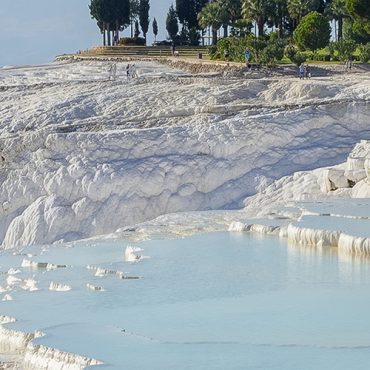Handmade Ceramic Tecnique
Ceramic wares had a stonepaste body, whose plumbiferous nature and high percentage of frit (a vitreous substance) set them apart from earlier stonepaste pottery produced in the Islamic world. According to the latest analyses, the composition of the stonepaste of Iznik ceramics was as follows: 65 to 75 % quartz (figure 7); 15 to 18% frit rich in lead and lime; 3 to 4 % highly plumbiferous frit; only 8 to 13 % non-calcareous clay. The addition of frit, obtained from crushed glass, was indispensable here, as when molten it would form a binder between the quartz particles. The low clay content of stonepaste reduced its malleability, making it difficult to turn; certain forms such as dishes with everted flanges or chargers were therefore obtained with the help of a template placed on the wheel and an exterior mold.
The body was then coated with thinned siliceous clay that was similar in composition to the paste and providing a perfect “fit” to the body. The decoration was applied to this slip coating when dry or after an initial firing of the body. It was trailed using a brush and various pigments and coated with a colourless glaze.
Designs were traced either with freehand drawings or with stencils in twins pieces and in highly structured compositions with repeated identical motifs.
Another distinctive feature of Iznik ceramics is the glaze coating the decoration. The composition of the glaze contained tin-opacified lead. This vitreous substance was of a highly pure composition here, characterised by a very low potash and magnesia content; these residual elements traditionally found in lead-alkali glazes came from their alkaline flux that was obtained from the ashes of plants from coastal or desert regions. The virtually total absence of such residue may be due to an additional ash purification stage, a technique used to produce Venetian cristallo glass from the mid-fifteenth century onward and which may have come to the notice of Iznik potters. The extremely transparent glazes of Iznik ceramic wares nonetheless contained a small proportion of tin. Firing temperatures for Iznik ceramics can only be estimated; such estimations range from 850-900° C to 1200° C.






